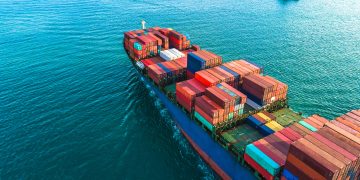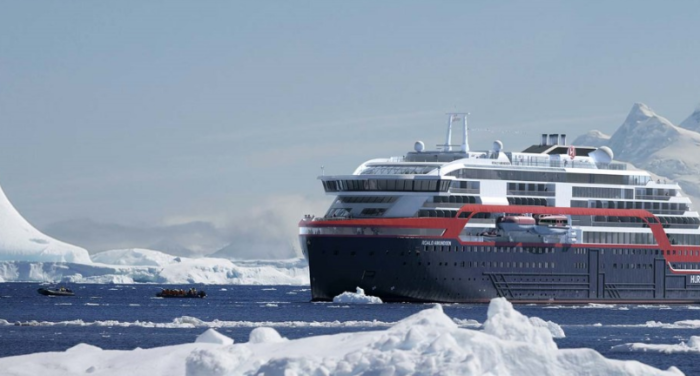This summer, Association of Arctic Expedition Cruise Operators (AECO) is working with cruise operators on identifying how the expedition cruise industry can drastically reduce the use of disposable plastics on ships. AECO will also continue to engage thousands of cruise passengers in beach cleanups in the Arctic.
Working from AECO’s Longyearbyen office, environmental agent Sarah Auffret has visited 16 expedition cruise vessels sailing in Svalbard. The goal is to collect, systematize and later share best practices to help reduce plastic consumption on expedition cruise ships, while working to enhance cruise passengers’ involvement in beach cleanups.
Ms. Auffret said the industry is eager to do their part in reducing the consumption of disposable products on ships.
It’s been great meeting people in the field and seeing how motivated and keen everyone is. Operators are becoming more aware of this issue. When I visit ships to assess how much disposable plastic is in use, it often opens up a very productive discussion on what they are using and what they can do better.
According to AECO, many of the ships have already taken several steps to cut back on disposable products. This includes providing reusable drinking bottles, installing water dispensers and replacing plastic straws and individually wrapped products with sustainable alternatives. Operators are also asking suppliers to deliver goods in more sustainable packaging.
The latest example is AECO member Hurtigruten, which banned all unnecessary single-use plastic: As of 2 July 2018, everything from plastic straws and cups, coffee lids and plastic bags were removed from all Hurtigruten ships, in line with the company’s goal to become the world’s first plastic free shipping firm.
In addition to cutting the plastic footprint of ships, AECO’s members are continuing their efforts to clean Arctic beaches during landings. In Svalbard alone, expedition ships pick up several tons of beach litter each summer, under a project that started almost 20 years ago, when an expedition cruise company saw an opportunity to help clean up marine debris around Svalbard during voyages.
The operator approached the Governor of Svalbard who offered logistical support to handle the waste. Clean up Svalbard was born, and more AECO members and local organizations got involved.
In recent years, about 20 tons of waste have been removed from beaches in Svalbard every summer. Expedition ships remove between 3 – 4 tons per season. The Governor of Svalbard organizes dedicated cleanup trips for locals twice a year while other local associations hold additional events, mainly in Isfjorden. According to studies of the collected waste in 2016 and 2017, 60-80% of it comes from the fishery industry.
AECO is working with UN Environment to combat marine plastic pollution as part of the Clean Seas campaign, with financing from the Svalbard Environmental Protection Fund and the Norwegian Environment Agency.
AECO provided a list of guidelines for Arctic beach clean up:
- Secure all your belongings so you do not lose any items overboard or on land.
- Your expedition team will bring dedicated cleanup bags ashore during your visits.
- Pick up any plastic or other marine debris you find during landings while making sure you do not stray away from your group.
- If you spot items that are out of reach, point them out to your expedition team.
- Your ship will transport the waste back to Longyearbyen where it will be disposed of in a dedicated container set up by the local council.
- The total amount of waste collected will be weighed at the end of the summer so our efforts can be measured.






























































